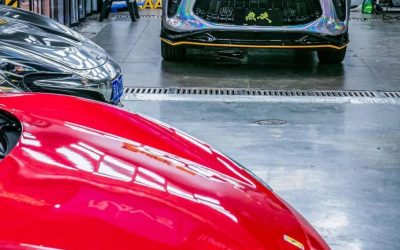Unlocking the Mystery of Toyota’s Remarkable Engine Efficiency: Why 41% and Why Others Struggle

Toyota’s engines are known for their outstanding thermal efficiency of 41%, which has left many wondering why other car manufacturers struggle to achieve similar numbers. This exceptional performance revolves around the complexities of internal combustion engines (ICE) and the difficulties in maximizing their thermal efficiency.
The basic function of internal combustion engines involves the conversion of thermal energy into mechanical energy. However, the second law of thermodynamics states that it is not feasible to take heat from a source and convert it entirely into useful work without any other changes.
Only a portion of the energy produced from fuel combustion during the combustion process can be effectively converted into mechanical energy, while the remainder is dispersed as thermal energy. Energy losses occur due to various factors like friction in gear components and between pistons and cylinder walls.
Improving thermal efficiency is achievable through methods such as increasing compression ratios and implementing direct fuel injection. However, there are limitations to enhancing thermal efficiency, and the maximum thermal efficiency typically applies to ideal conditions, such as constant-speed driving at 80 km/h.
Under typical driving conditions, vehicles often operate at varying speeds and loads, posing challenges in maintaining optimal conditions. High-speed, high-load situations can lead to increased fuel consumption, emphasizing the significance of electric motors, which can uphold high efficiency regardless of speed.
Hybrid vehicles capitalize on this concept by employing electric motors for low-speed driving to avoid the engine’s least efficient operating range. Meanwhile, at higher speeds, the engine operates directly, optimizing efficiency. This dual-mode approach contributes to fuel savings and overall efficiency.
Nevertheless, achieving 100% thermal efficiency where all gasoline energy transforms into the vehicle’s kinetic energy without any losses remains an idealized scenario. In reality, losses occur in various mechanical components, making complete energy conversion unattainable.
Changan’s Blue Whale engine, with a thermal efficiency exceeding 40%, serves as an example of the pursuit of higher thermal efficiency, aligning with the industry’s commitment to reducing fuel consumption and environmental impact. This endeavor for improved efficiency is also observed in the commitment of manufacturers like Mazda and Ferrari to rotary engines, despite challenges related to higher fuel consumption and other limitations compared to Otto cycle engines.
While hybrid and electric vehicles have made strides in enhancing efficiency, traditional internal combustion engines continue to hold significance in the automotive landscape. As electric vehicles become more prevalent, advancements in battery technology and alternative energy sources are anticipated to further transform the automotive industry.
In summary, while the efficiency of internal combustion engines, as seen in Toyota’s case, has reached impressive levels, there are promising innovations on the horizon that may redefine the way vehicles harness and utilize energy, ushering in an era of sustainable and efficient transportation.











